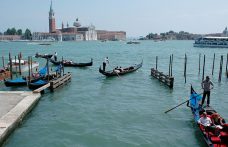
In British wine trade, Italian renaissance

by Nicolas Belfrage
The last half century has seen a remarkable transformation in the way Italian wine is viewed in the UK. Today the idea that Italy is capable of producing good to outstanding wine has at last caught on, but fifty years ago the words ‘fine’ and ‘wine’ simply did not appear in the same sentence, unless it was in the negative. The fact that excellent wines did exist in Italy — from producers like Quintarelli, Giacomo Conterno, Gaja, Masi, Antinori, Biondi Santi, Valentini, Mastroberardino and others — was virtually ignored by the Port, Sherry, Claret, Hock and Champagne-swigging rulers of the British wine trade. To them, Italian wine was either ‘cheap and cheerful’ or faulty. Alas, all too often it was indeed defective in some way – oxidized, volatile, unclean, or just plain dull (it was a time of pasteurization or ‘hot-bottling’) – reinforcing the opinion of the wine-drinking public, which at that time was extremely limited, that it was not worth wasting good money on anything remotely expensive.
The advent of the Italian wine ‘revolution’ or ‘renaissance’ went for the most part un-noticed by the Brits in the 1970s
The stunning success of Sassicaia in a taste-off of international Cabernets caused a stir, but that was because the winner was more French than the French. The fact that producers were beginning to apply higher international standards to native Italian wines from indigenous grapes began attracting the attention of the British public from about the early 80s, when the unofficial designation ‘SuperTuscan’ first appeared. Lambrusco was still the people’s favourite, but the idea that Italian wine need necessarily be on the level of the sweet frothing stuff was challenged by farsighted people like Renato Trestini to whom I dedicated my 1985-published book ‘Life Beyond Lambrusco’, of which the subtitle was ‘Understanding Italian Fine Wine’ (I was determined to get the words ‘fine’ and ‘wine’ together in the title).
By the end of the 1980s, in Britain, the younger generation of Britain’s wine trade and press were getting interested by the ferment of activity that was by then taking place in the Italian winefield. They noted that Italy had practically caught up with France in respect of winery construction and equipment, noted too how young and enthusiastic Italians were visiting vineyards throughout the world picking up information and techniques and exchanging ideas. In the mid-1980s the first non-Italian-owned specialist Italian quality wine importer and distributor, Winecellars, was founded in London, and later in that decade a group of British enthusiasts, with Trestini’s backing, established Forum Vinorum, an Italian wine tasting and discussion group. In the early 1990s the Institute of Masters of Wine took an official trip to Italy; at last the establishment were beginning to come off their high horse and allow themselves to look at something radically different.
The 1990s, in Italian wine terms
It was the decade of vineyard improvement – clonal selection, increased density, canopy management and the like. Work in the vineyard does of course take much longer to come to fruition in wine terms than work in the cellar, but by 2014, following a decade and a half of increasing recognition and popularity on the British market, Italian fine wines had achieved the unthinkable. The 2013 French crop had failed in the eyes of the fine wine market, and the ‘classics’ which the trade fell back on were from Barolo, Barbaresco, Amarone, Montalcino, Chianti Classico and the like.
Italian fine wine had come in from the cold.
See also ...


The battle continues with the new Chianti Gran Selezione
On 11th November, the Chianti Wine Consortium announced Read more


Changes at the top in Genagricola and Santa Margherita
Big news in Genagricola and Santa Margherita Gruppo Read more


Pinot Grigio delle Venezie: the first national conference
The curtain will rise on the new appellation Read more
